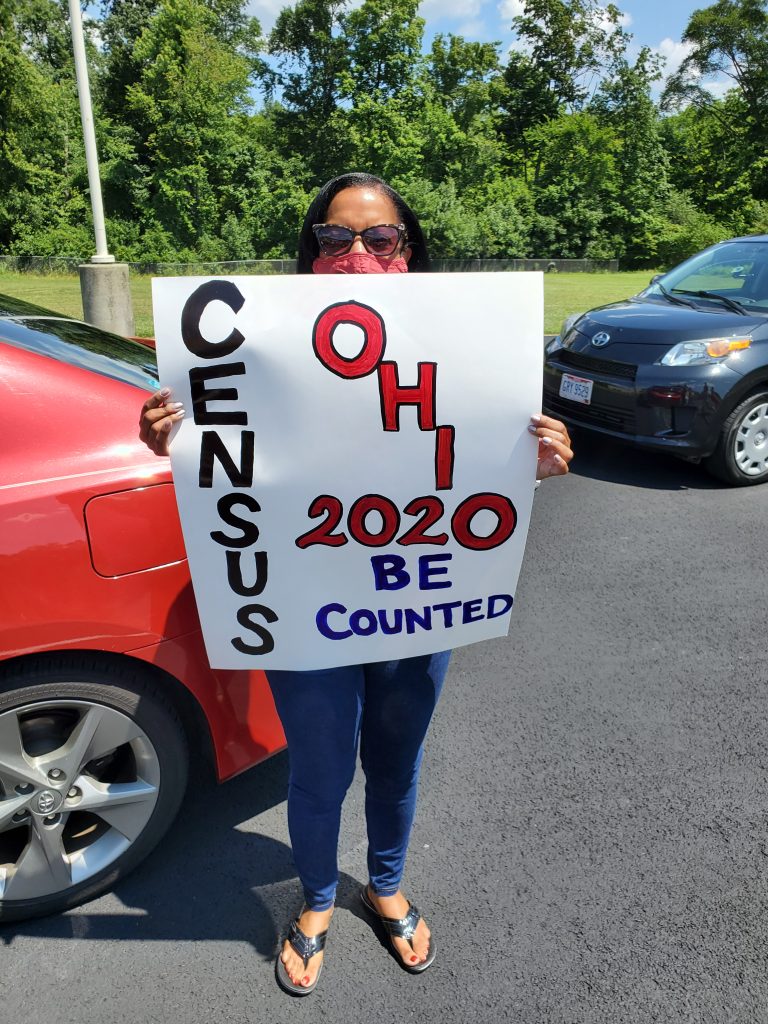The 2020 census is an opportunity for the state of Ohio and our nation to assure every individual they are more than just a number – especially our children.
In light of the recent announcement to cut census operations short this year, we are all called to act in the best interests of our children by making sure they count and making sure we count them now – before we leave billions of dollars on the table that could otherwise fund and resource their childhoods for the next decade. By completing the 2020 census, we are advocating for and empowering ourselves, our communities, and our children.
The data collected from this census will allocate adequate resources to our state in order for us to care for all people living in Ohio. It is important to remember that while adults and elderly persons are a majority of our state population, the great state of Ohio also has an ever growing population of children. There are an estimated 2,593,3325 million children living in Ohio and pre-pandemic, 19.8 percent of them were living in poverty and in communities that lack resources to provide sufficient education and nutritional access. Missing children in the census leads to inadequate funding and appropriations to the communities where they live. For example, a recent analyses showed that every missed individual in the 2020 Census means that states leave anywhere between $1200-1700 on the table, every year, and for ten years.
In 2010, 35,000 Ohio children under the age of five were not counted in the census. What does this mean exactly?
It means that the state of Ohio lost billions of dollars in local funding for a variety of different programs.
To put the importance of counting every child into perspective, the state of Ohio alone received over 33 billion dollars from federal grants in fiscal year 2016. Those billions of dollars were awarded based on the 2010 census and are currently being used to fund federal programs such as foster care, low-income housing, Medicaid for children in Ohio, public transportation, and other infrastructure and economic development programs that we all depend on. Now more than ever, especially in the midst of a global pandemic, it is critical to ensure federal funding is accurately awarded so that all communities secure the resources they need for their residents.
Many children live in complex households, dividing their time between parents, with relatives, or sometimes with other caring adults. How do we make sure all children are counted in the 2020 census?
Even though some children might not live with their biological parents, they still have the right to be represented, seen and heard. If a child is residing with a grandparent, in the foster care system, or living in a joint-custody arrangement with their parents someone is responsible for counting them in the census.
- One person should fill out the census for every home that has its own physical address and count for every child that sleeps there
- Babies and children of all ages should be counted in the home where they live and sleep a majority of the time.
- If a child spends an equal amount of time at more than one residence, count where the child was staying on April 1st, 2020.
- If a child does not have a permanent residence, count where the child was staying on April 1st, even if it was temporary.
What are the consequences for our communities if we end the census count early this year?
The pandemic has disrupted the complete count field operations in every state and in every community, however Congress has the constitutional responsibility to deliver accurate data about our nation’s demographics. Given these tensions, we must balance this constitutional requirement with the very real human duty of keeping our communities and our census workers safe. The decision to reverse the proposed extension will have an impact on the vulnerable populations, such as young children and people in low-income communities by not allowing adequate time to get this critical job done. This latest action represents a disservice to communities across the country by forcing an undercount, and as a result – denying communities the resources they need to serve their residents.
At the micro-level, there is still much work to be done to ensure every individual has time to complete the census. Every state has cities and towns with low response rates, and unfortunately, those low participating areas are going to lose resources that improve overall quality of life. In the state of Ohio, the low response rates are concentrated in urban areas of Cleveland, Columbus, and Cincinnati. These areas have been historically undercounted and also under-resourced as the result of racist policies such as red-lining. Other low response areas in Ohio include Morgan and Harrison counties, which are located in the heart of the state’s Appalachian region.
How can Ohioans take an active role in the complete count of all children in their community?
The Census Ambassador program with the Ohio Census Advocacy Coalition (OCAC) is providing an opportunity for Ohioans to encourage participation in the census in their communities. This statewide program provides ambassadors with updates and resources on how to spread the word, get out the count, and make sure their community gets the resources it deserves. An ambassador receives a digital sticker to post on social media to let friends, family, and their community know they are a source for accurate census information. Interested census advocates can participate in this program by texting “PLEDGE” to 614-295-9592.









